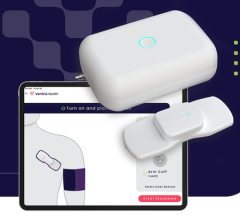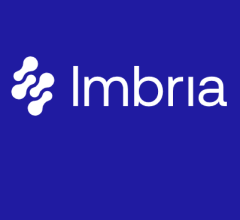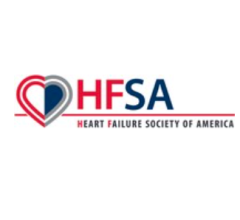
June 23, 2025 — iRhythm Technologies, Inc. announced the results from two large-scale real-world studies presented at the American Diabetes Association’s 85th Scientific Sessions (ADA 2025). The analyses reveal that cardiac arrhythmias are common and often occur early in people with type 2 diabetes (T2D) — especially those who also have chronic kidney disease (CKD). These findings suggest a critical opportunity to enhance early detection strategies in at-risk cardiometabolic populations.
The studies examined longitudinal claims data from over 30 million U.S. adults, providing new insights into how arrhythmias — often asymptomatic — cluster around major disease inflection points. In T2D patients, arrhythmias were frequently identified prior to or shortly after diagnoses of CKD or major adverse cardiovascular events such as stroke or heart failure.
Cardiac arrhythmias — conditions in which the heart beats too fast, too slow, or irregularly1— are a serious public health concern. In the general U.S. population, they affect roughly 1 in 20 adults2. But in people with type 2 diabetes and chronic kidney disease — already at elevated cardiovascular risk3 — new data reveal that arrhythmias occur more frequently, and often much earlier, than previously recognized.
Left undetected, certain arrhythmias can lead to stroke, heart failure, hospitalization, or even death4-6. That’s why early detection is critical — giving clinicians a chance to act before complications arise. Yet in most diabetes care pathways, arrhythmias are not routinely screened for7, and many patients experience no symptoms at all8.
“These findings support a growing body of evidence that heart rhythm disorders are not just late-stage complications—they often emerge much earlier, silently, and in ways that may help us better identify patients at rising risk,” said Mintu Turakhia, MD, iRhythm’s Chief Medical Officer, Chief Scientific Officer, and EVP of Product Innovation. “For patients living with diabetes and kidney disease, earlier detection of these arrhythmias may offer a window to take action before more serious events occur.”
Cardiac Arrhythmias — Early and Frequent
In the “Incidence of Cardiac Arrhythmias in Patients with Diabetes: A Real-World Study” (T2D-only analysis):
- In a T2D cohort of 8.8 million individuals, over 1.1 million individuals were diagnosed with major arrhythmias.
- 47% of arrhythmias occurred after diabetes diagnosis, with a median time of 496 days.
- Among patients who experienced a MACE, 25% did so on or after arrhythmia detection, while 45% of MACE occurred beforehand—pointing to a complex but tightly linked risk timeline.
In the “Incidence and Timing of Major Arrhythmias in T2D and CKD: A Real-World Analysis” (T2D + CKD population):
- Among 3.2 million T2D patients who then received a CKD diagnosis, 670,003 (21%) developed a major arrhythmia, of which 397,359 (59%) occurred before CKD diagnosis.
- Median time from T2D to arrhythmia was 488 days; median time from arrhythmia to MACE was 800 days.
- Notably, 17% of patients who experienced a MACE did so within three days of their arrhythmia event.
These findings suggest that arrhythmias are not only common in people with diabetes and kidney disease, but are often detected for the first time in close proximity to major cardiovascular events.
A Broader Pattern Emerging
These new results build upon findings presented by iRhythm at the American Heart Association’s (AHA) 2024 scientific sessions, which demonstrated that patients with diabetes and COPD who developed arrhythmias had:
- Twice the hospitalization rate of those without arrhythmias
- 35–50% higher emergency care costs
- Hospital stays up to 5 days longer
Additionally, real-world data presented at ACC.25 demonstrated that fewer than one in five patients experience a symptom coinciding with an arrhythmic episode. This reinforces the need to monitor patients based upon unique risk factors instead of symptoms.
Across both ADA and AHA datasets, the real-world evidence shows a consistent signal: undiagnosed arrhythmias are clinically consequential and economically burdensome—and early rhythm detection could help change that trajectory.
- What is an arrhythmia? National Heart Lung and Blood Institute, 2022. www.nhlbi.nih.gov/health/arrhythmias
- Desai et al. Arrhythmias. StatPearls [Internet], 2023. www.ncbi.nlm.nih.gov/books/NBK558923/
- Swamy S, Noor SM, Mathew RO. Cardiovascular Disease in Diabetes and Chronic Kidney Disease. J Clin Med, 2023. https://pmc.ncbi.nlm.nih.gov/articles/PMC10672715/
- Ataklte et al. Meta-analysis of ventricular premature complexes and their relation to cardiac mortality in general populations. The American Journal of Cardiology, 2013.
- Lin et al. Long-Term Outcome of Non-Sustained Ventricular Tachycardia in Structurally Normal Hearts. PLOS ONE, 2016.
- Wolf et al. Atrial fibrillation as an independent risk factor for stroke: the Framingham Study. Stroke, 1991.
- Bhave, P. D., & Soliman, E. Z. (2024). Should patients with diabetes be routinely screened for atrial fibrillation? Expert Review of Cardiovascular Therapy, 22(1–3), 5–6. https://doi.org/10.1080/14779072.2024.2328645
- mSToPS Clinical Trial Demonstrates Zio by iRhythm Significantly Improves Health Outcomes for At-Risk Patient Populations, iRhythm Technologies, 2021. www.irhythmtech.com/company/news/irhythm-technologies-and-the-national-association-of-managed-care-physicians-partner-to-study-the-value-of-ambulatory-cardiac-monitoring-solutions-0.


 October 28, 2025
October 28, 2025 









